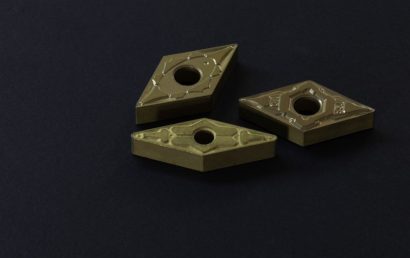Know Your Thermal Spray Powders
Thermal spraying, (sometimes referred to as metal spraying), is a technology that is used to extend the life of numerous products by protecting them against volatile environments. There are a number of thermal spray powders on the market, as well as various processes of application. Let’s take a look at a number of different thermal spray powders.
Corrosion Protection Thermal Spray
When it comes to metallized coatings, there are two basic categories. These consist of engineering coatings and finishing coatings.
Engineering coatings can refer to barrier coatings or wear resistant coatings. Finishing coatings can refer to decorative or anti-corrosion coatings. As an example, engineering and anti-corrosion markets that utilize metal spraying can include construction, petrochemical, marine, and oil and gas industries (and more).
How is metal thermal spraying done? Small molten particles are projected in a continuous coating onto a surface, adhering to it. That’s it in a nutshell. It is, of course, more complicated than that – but that’s the basic idea. An atomization method, spray material, and heat source are also involved.
Metal Powders
Various industries will use different kinds of coating materials. Here are a number of most commonly used powdered metals:
- Zinc powder
- Tin powder
- Black and red cupric oxide
- Nickel powder
- Manganese powder
- Iron powder
- Granular copper
- Cadmium oxide powder
- Bismuth powder
- Aluminum powder
Varying particle size distributions are wide ranging when it comes to the application of these sprayed powders.
Not All Thermal Spray Involves Metal
The thermal spray coating process, though commonly associated with the spraying of metal powders, can involve the application of nonmetallic materials. Plastics, ceramics, alloys, and composites can also be thermal sprayed onto a surface.
Increased particle velocities usually equate to increased coating quality. A number of measurements are used to assess coating quality. These can include surface roughness, bond strength, micro and macro hardness, oxide contents, and porosity.
Thermal Spraying Variations
In addition to various substances that can be thermal sprayed, there are a number of thermal spraying variations in existence. These include the following:
- Cold spraying
- Warm spraying
- HVAF or high velocity air fuel
- HVOF or high velocity oxy-fuel coating spraying
- Flame spraying
- Wire arc spraying
- Detonation spraying
- Plasma spraying
Industries That Use Thermal Spray Coatings
Think of a product – any product. The industry through which that product was developed probably uses thermal spray coatings in one way, shape, or form. Just as an example, here are some of the industries that utilize thermal spray:
- Wire drawing
- Wind energy
- Valves
- Textile manufacturing
- Solar energy
- Rubber manufacturing
- Pump repair
- Pulp and paper
- Printing machinery
- Power and energy
- Pharmaceutical and medical processing
- Petrochemical
- Molds and dies
- Mining
- Metal production and processing
- Material handling
- Marine
- Industrial machinery
- Food and beverage processing
- Fluid handling
- Electronics and semiconductor
- Defense and military
- Converting
- Compressor
- Chemical
- Bottling and canning
- Biomedical
- Automotive
- Agricultural
- Aerospace and rotorcraft
Knowing full well that the attractiveness of protective coatings is hard to resist, but knowing which coating to use can seem overwhelming, A&A Coatings has helpful staff members standing by. We can assist you in deciding which thermal spray process and coating is best for your particular application. Contact us today to find out how thermal spray coatings can benefit you, your business, and your industry.




